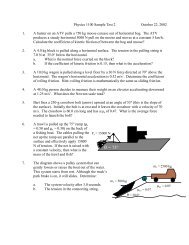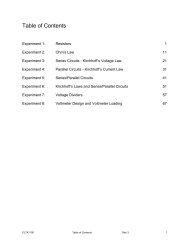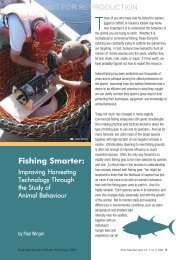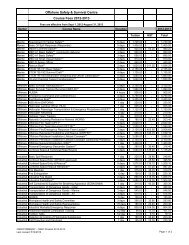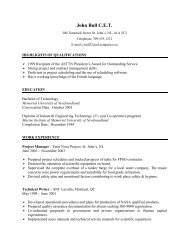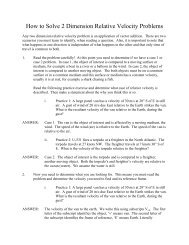Create successful ePaper yourself
Turn your PDF publications into a flip-book with our unique Google optimized e-Paper software.
Part 1: Varying the mass.• Enter MPLI and open the file “circular.exp”. This file contains a Force vs. Time graph,which will allow you to record the force, and also contains the necessary calibration.• While varying the mass it is important to keep the radius of the circular path constant.The radius should be measured from the center of the turntable to the center of the object.The radius can be adjusted by moving the force sensor up or down the ring stand. Recordthe radius that you are using.r =• It is also important to keep the velocity of the object constant. Start your turntable usinga gentle push. If the same person starts the motion each time with a steady and consistentforce then the velocity should remain fairly constant. However, there will be somevariation.→ As the object rotates a sin wave appears on the Force vs. Time graph.→ The time required for one complete rotation is the time difference betweensuccessive peaks. Therefore, we can keep the velocity constant by allowing thesweep to run until we have a certain number of waves for each trial (example: 5waves in 5s).→ Once the correct number of waves is reached press stop or the readings willcontinue and the necessary information will be lost. It is important to stop at theend of the sweep.→ We can now calculate the velocity since we know the distancetravelled by the object in one cycle and the time required for that cycle to becompleted. (Note: time for one cycle = time / # of waves, the distancetravelled is equal to the circumference of the circle.)average velocity =• Record the force from the graph by taking the statistical average. Both the force and themass should now be recorded in an appropriate table. Repeat the experiment several timesusing different masses. Determine the mass of your object using the balance provided.Force (N)Mass (Kg)• Once all data has been collected enter Graphical Analysis and plot a graph of Force vs.Mass. Linearize the data to determine how the force and mass are related. Print threecopies of your graph.- 38 -






